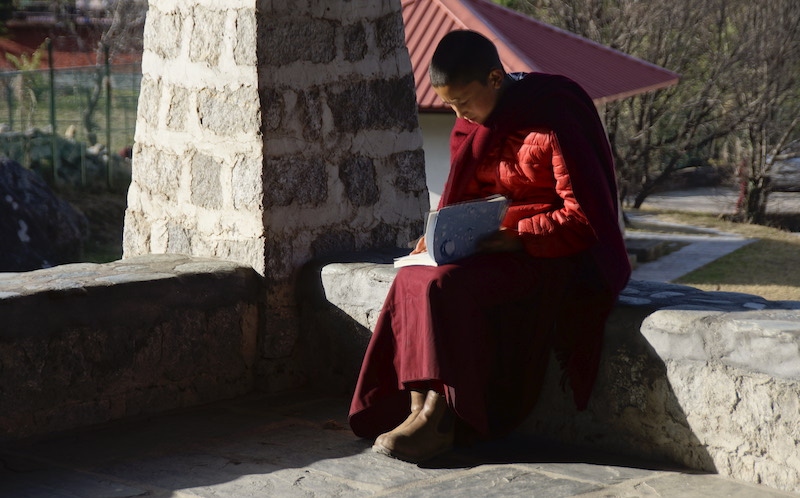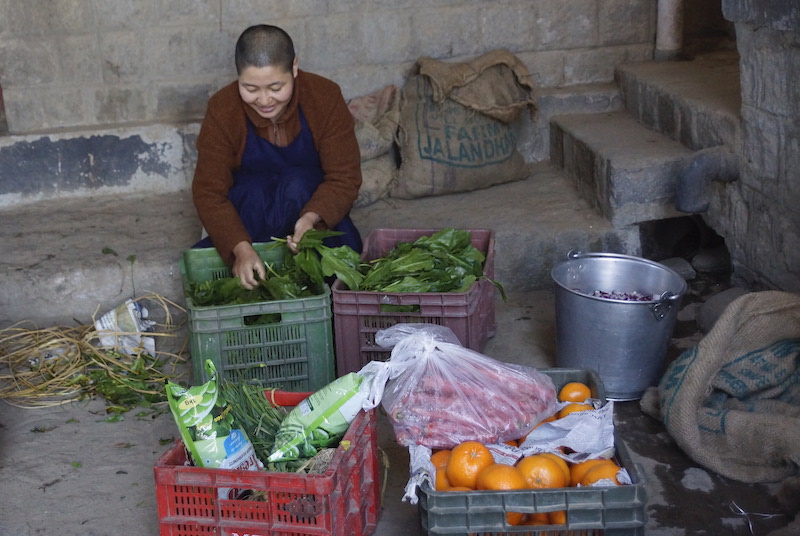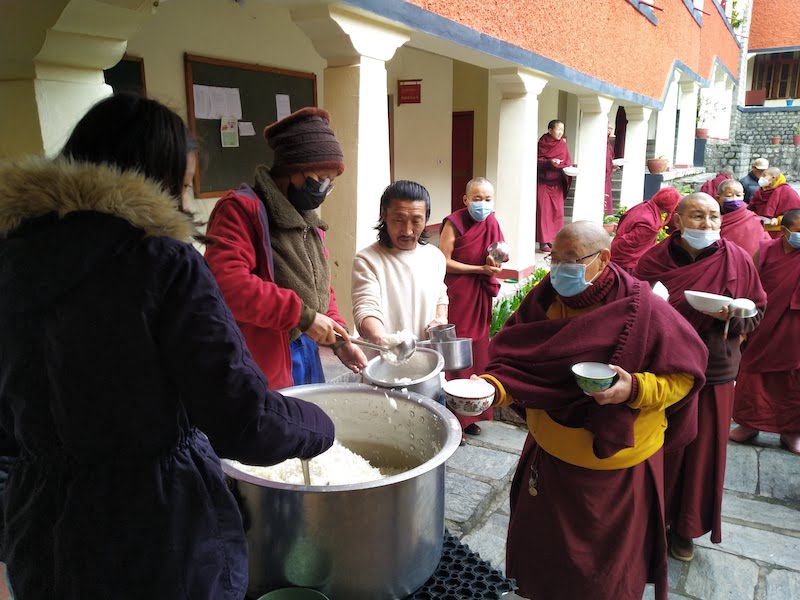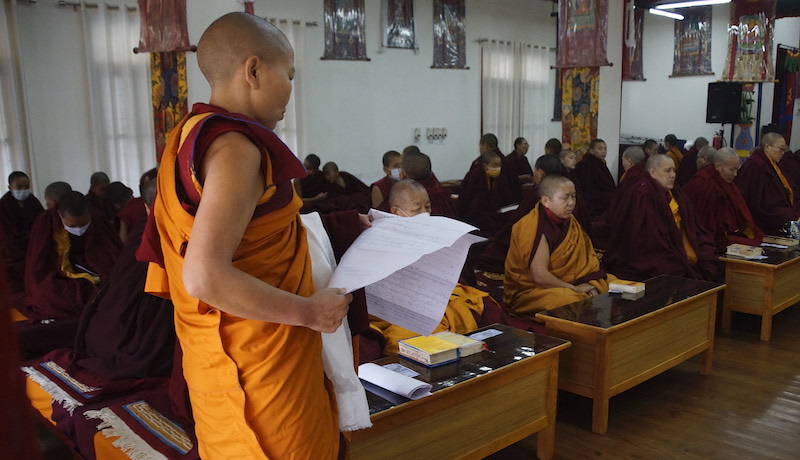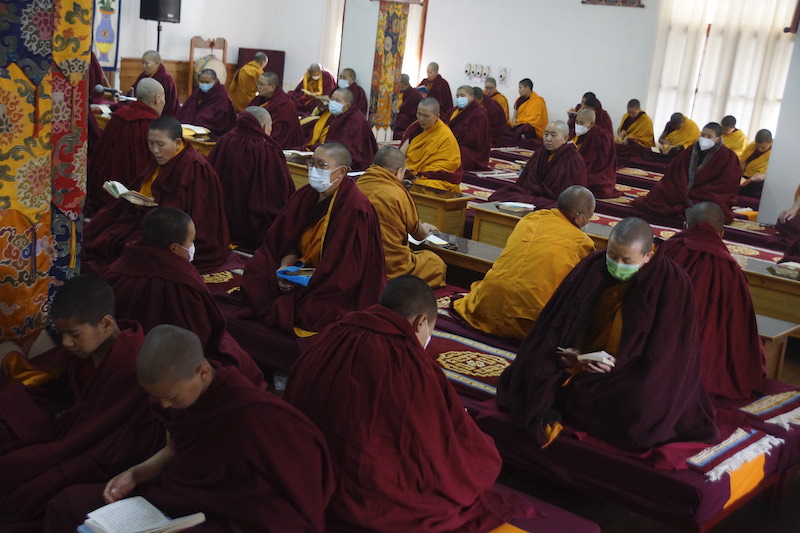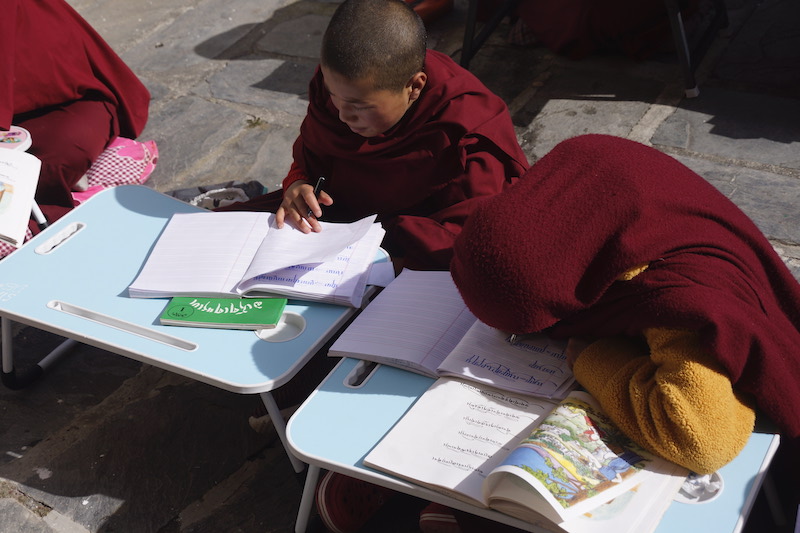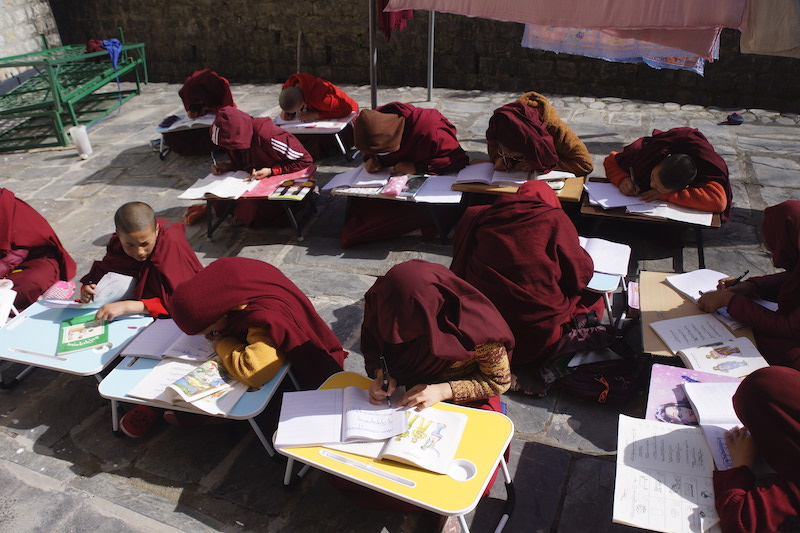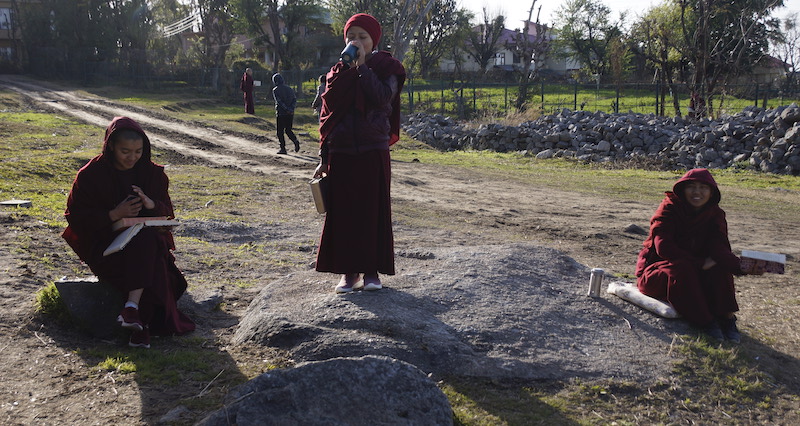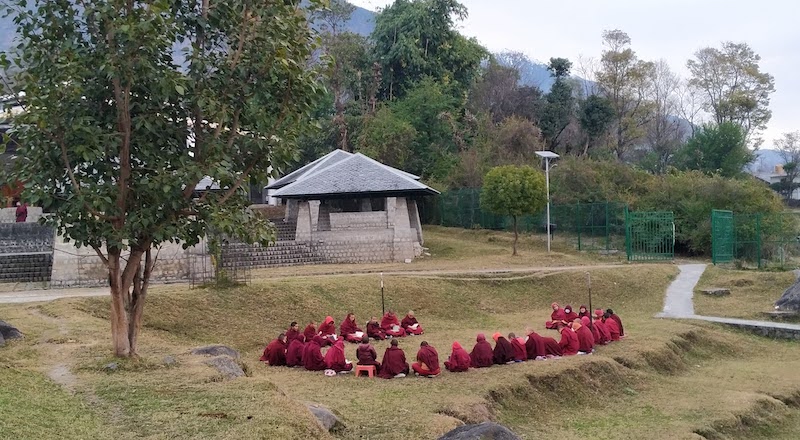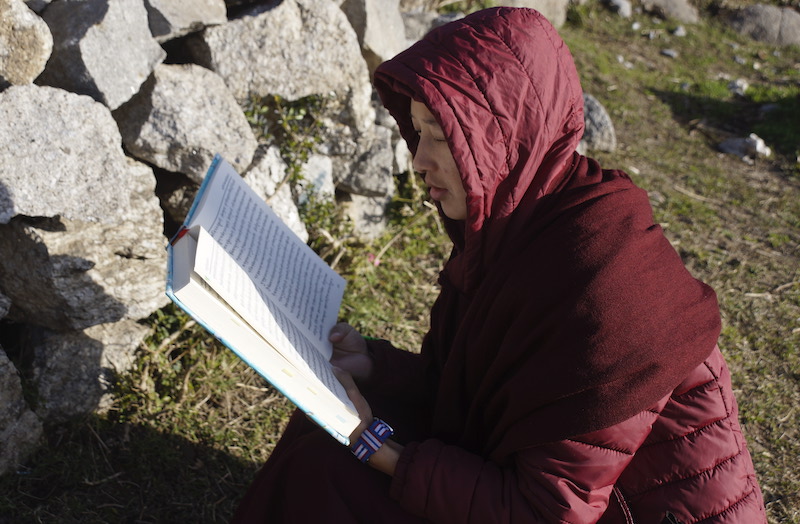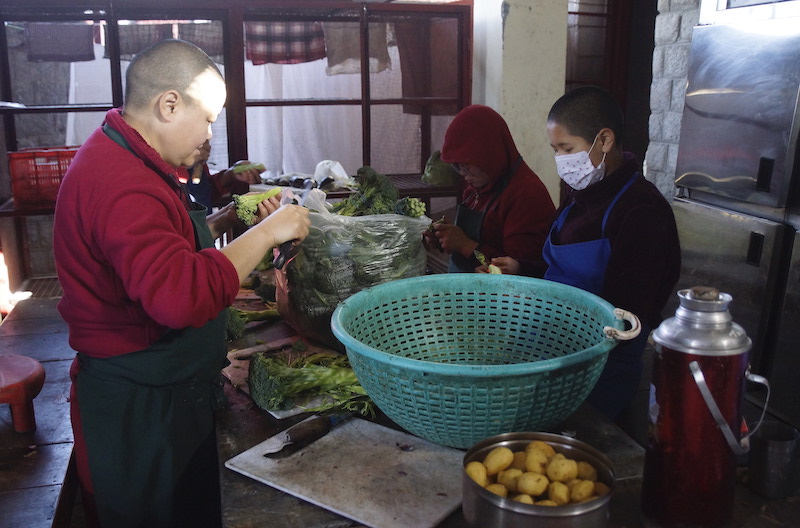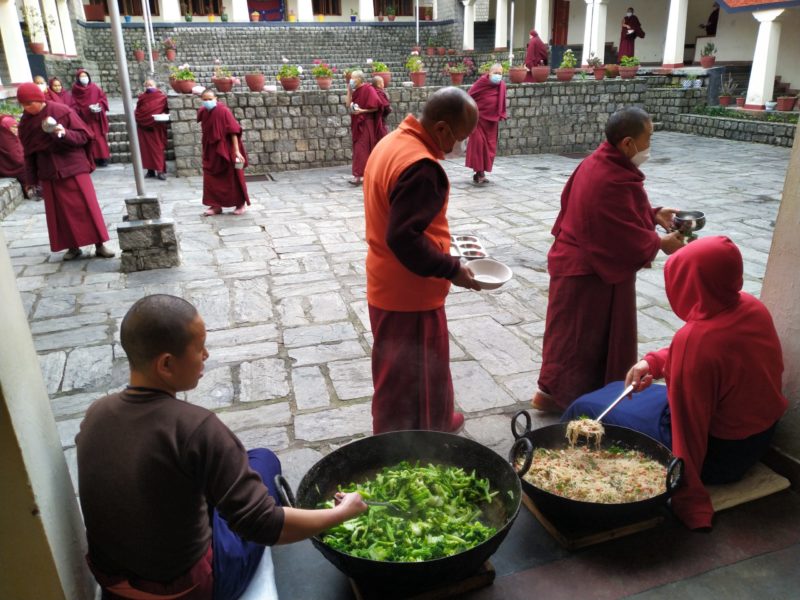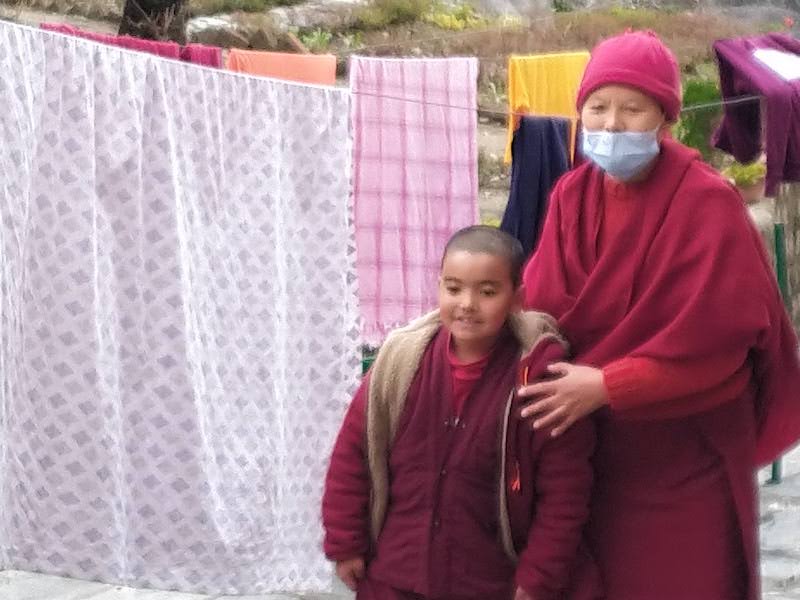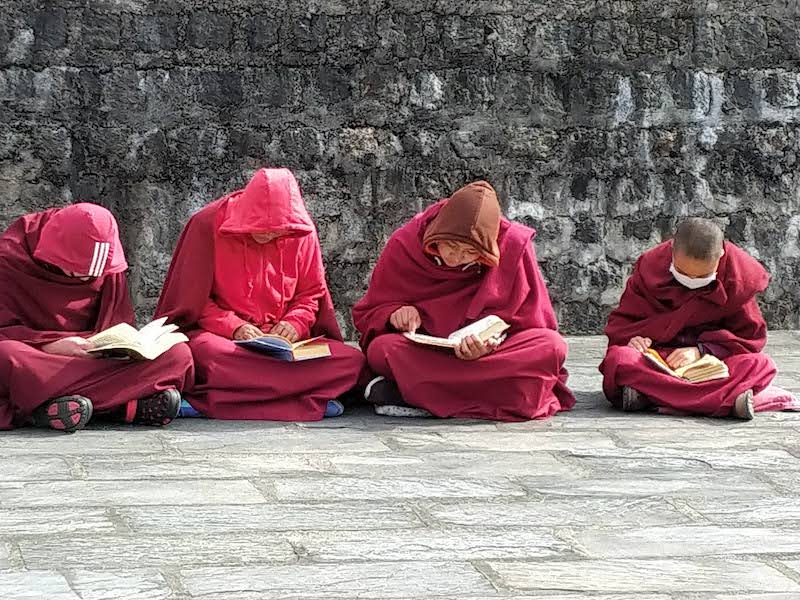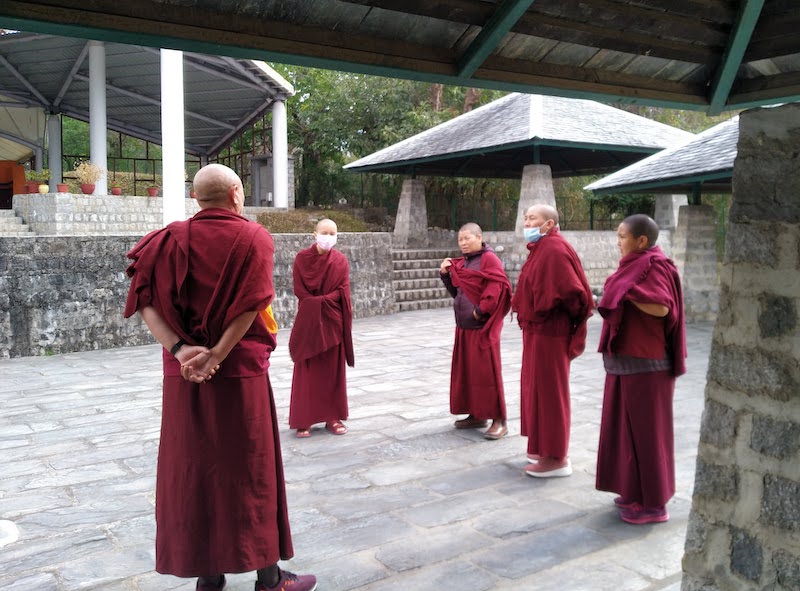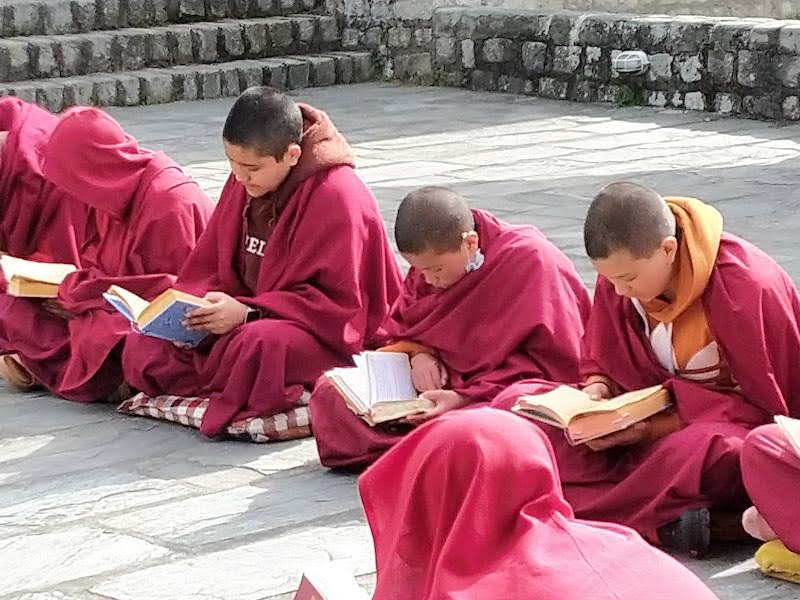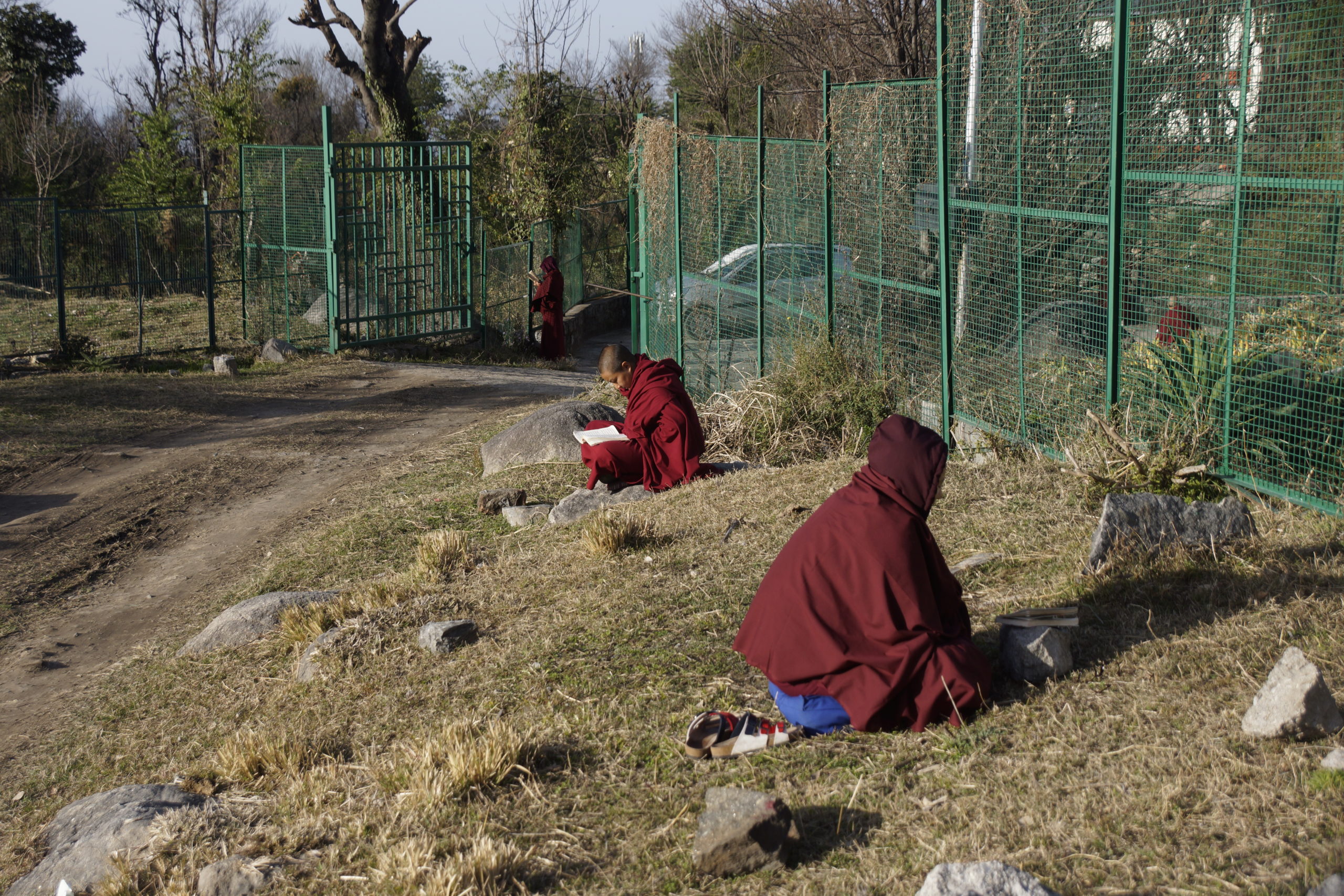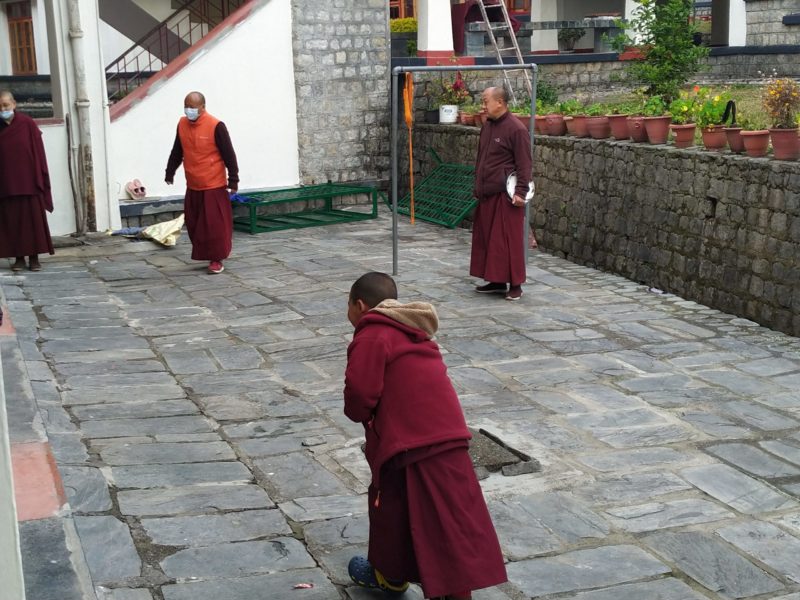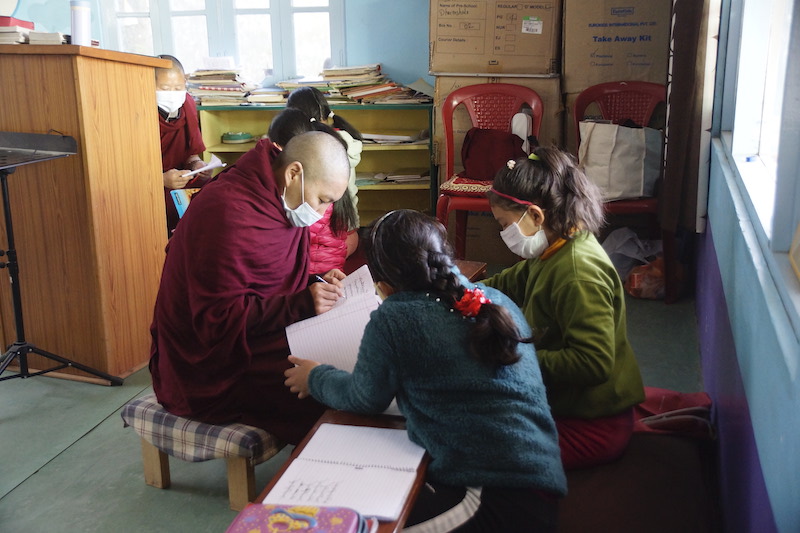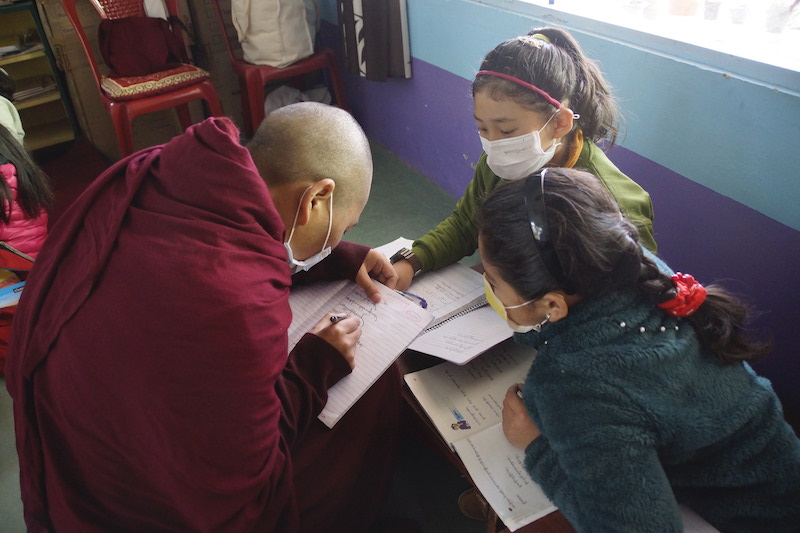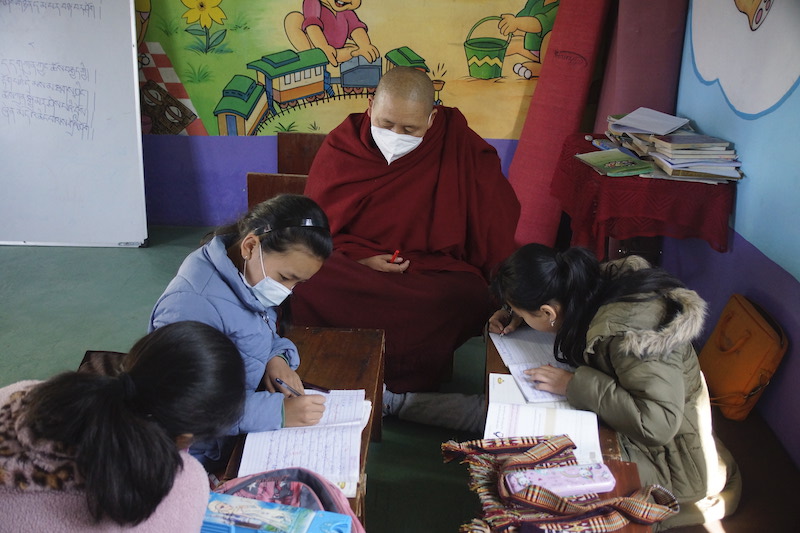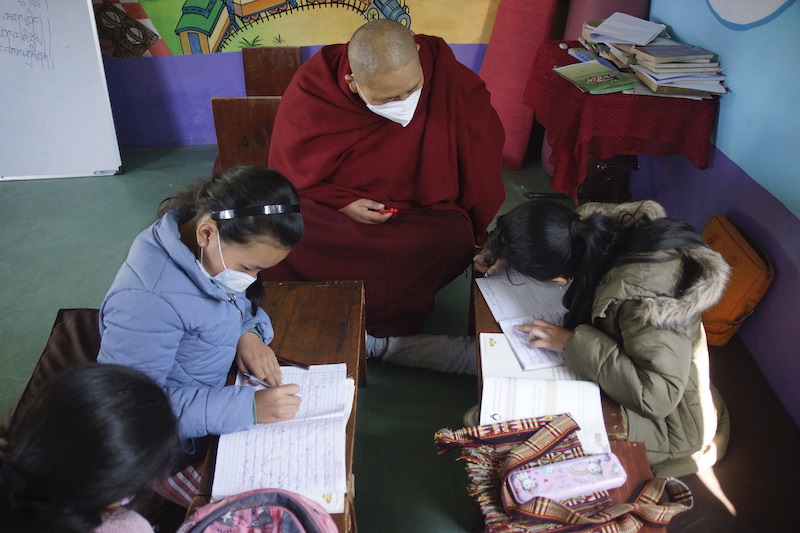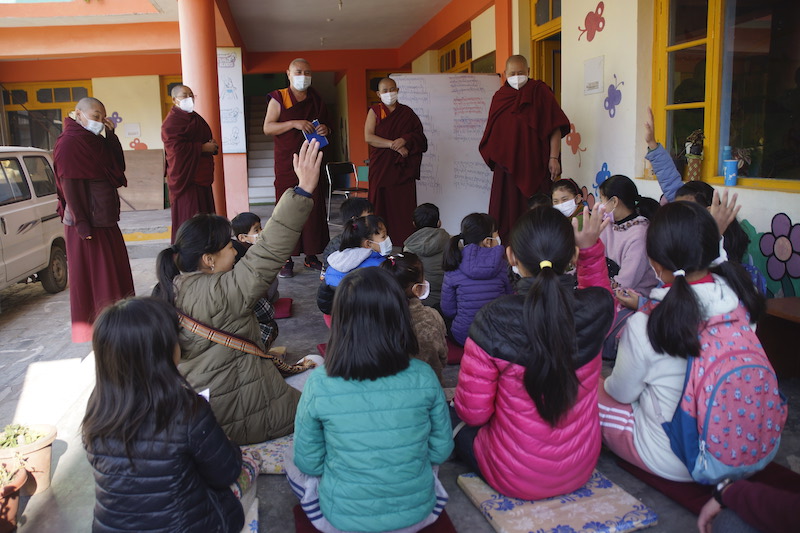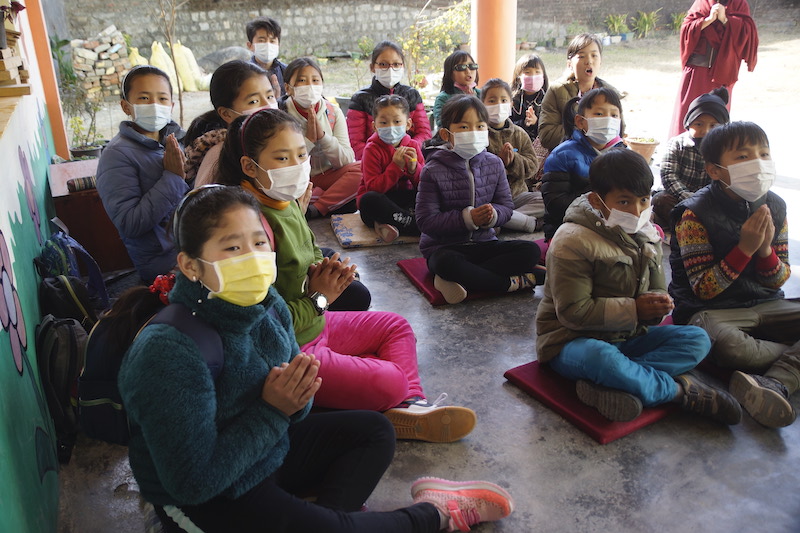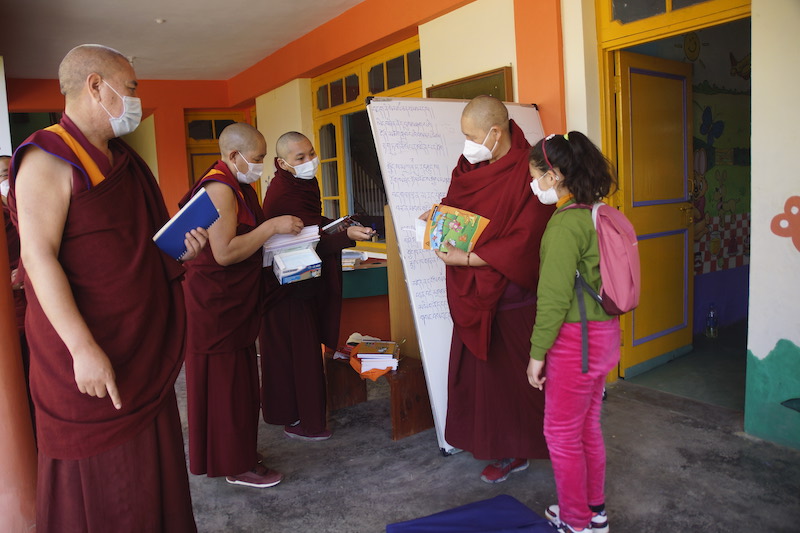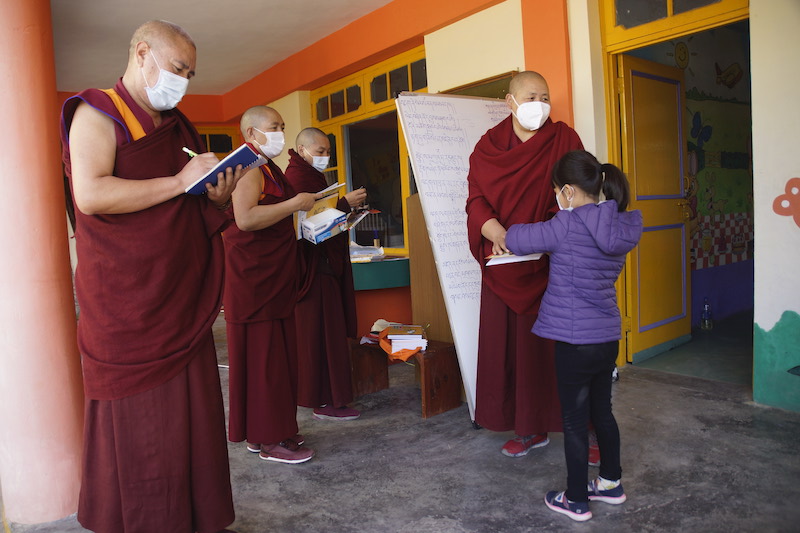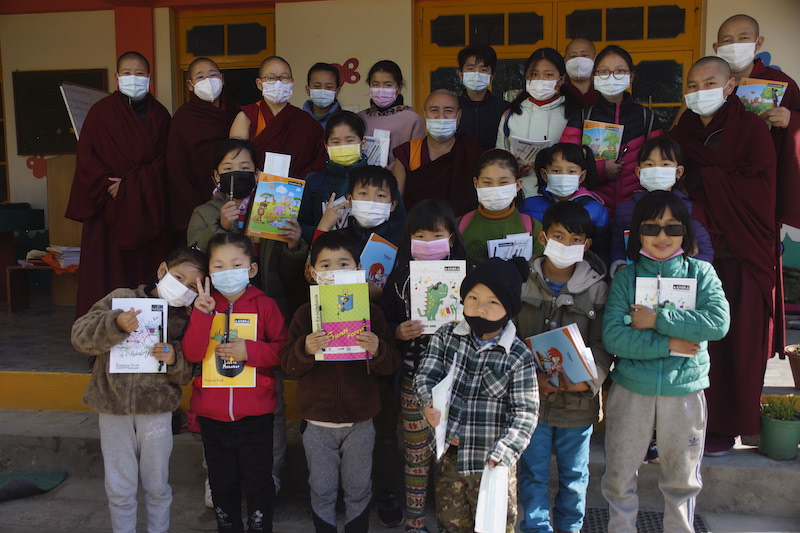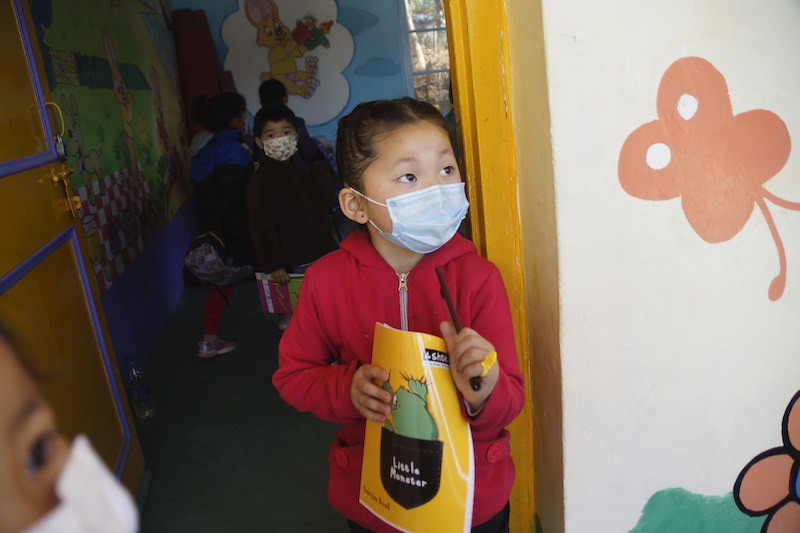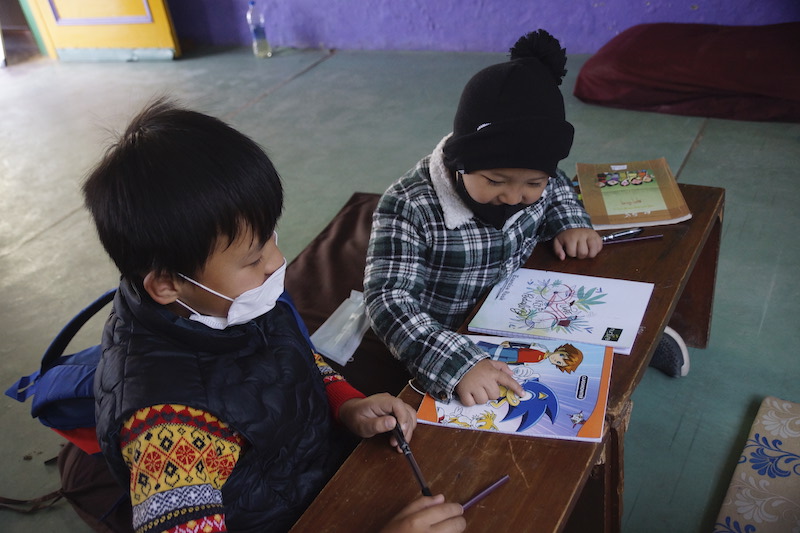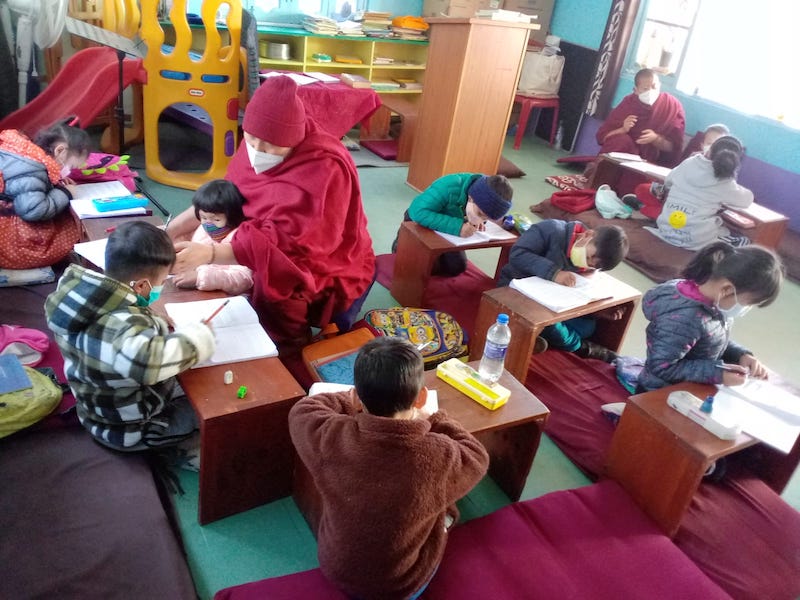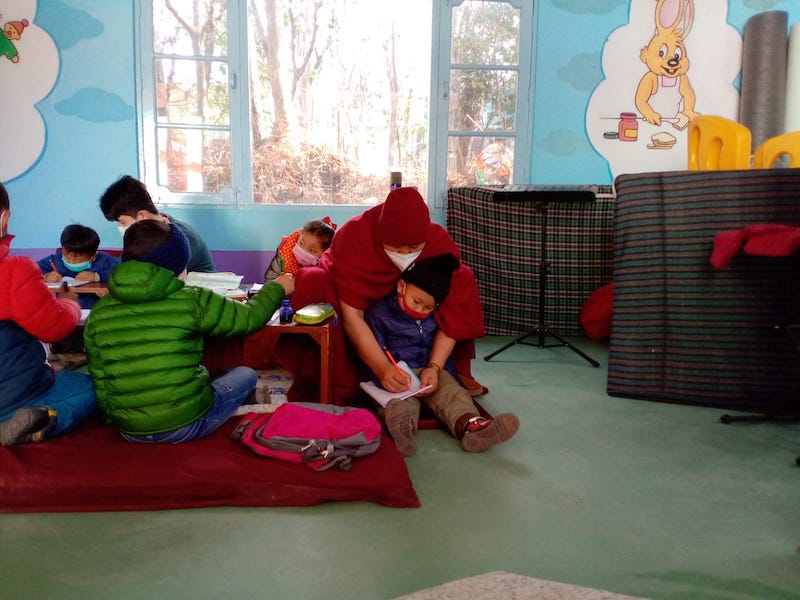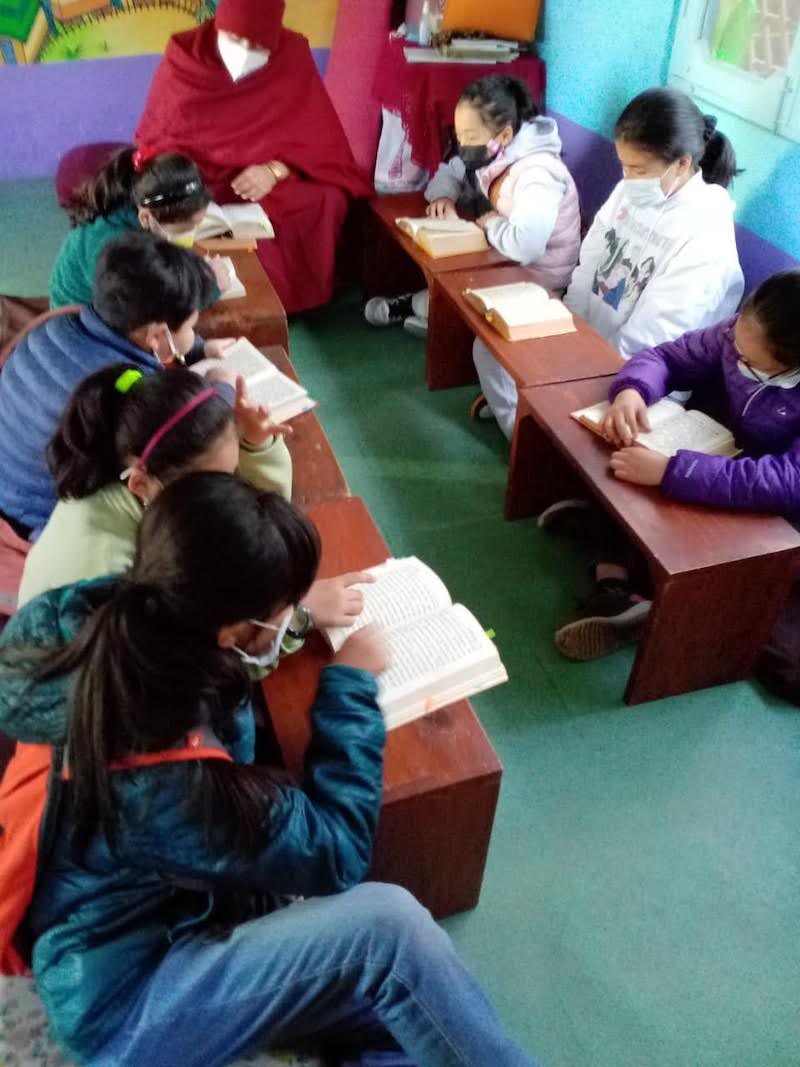Today is the first day of spring, but is it really goodbye winter at Tibetan Buddhist nunneries in northern India?
Visit two nunneries with videos and photos to see the life of the nuns in winter.
Winter at Sherab Choeling Nunnery
Sherab Choeling Nunnery in the remote, high-altitude Spiti Valley is one of seven nunneries supported by the Tibetan Nuns Project. It was founded just over 25 years ago to educate Himalayan Buddhist nuns who would otherwise have no opportunity to receive any formal schooling or spiritual education.

Sign for Sherab Choeling Nunnery in the Indian Himalayas. The nunnery is very secluded and is at almost 4,000 feet or 1,200 meters altitude.
Winters are tough at Sherab Choeling and this year was no exception. In February it was snowy and cold with temperatures dropping down to -8°F or -22°C.
The 62 nuns at the nunnery have many winter chores such as carrying water, washing dishes at an outdoor pump, and shovelling snow. There is very little heat in the nunnery, aside from the stoves for cooking.

The nuns wash their dishes at an outside pump and fetch water for the nunnery.
Last week, an avalanche blocked one of the main roads into Spiti, the Manali-Leh highway, stranding vehicles while another avalanche blocked a major road through the Spiti Valley. Winter may not be over yet.

The nuns gather in the sunshine to shovel snow and sweep the steps of the nunnery.
Here’s a video of winter at Sherab Choeling with clips made by the nuns. Can’t see the video? Click here.
Life in Winter at Dolma Ling
The wonderful Media Nuns at Dolma Ling Nunnery and Institute have documented daily life at the nunnery in January and February.
With the rise of the highly transmissable omicron variant in the early part of 2022, the nuns did more activities outside. Despite the cold weather, they studied and ate their meals outdoors as much as possible.
Here’s a slideshow. Can’t see it? Click here.
Geshemas Teach Children on Their Winter Break
Every winter, the Tibetan children who live near the nunnery have a long winter break. This year, the Geshema nuns at Dolma Ling wanted to help the children improve their Tibetan reading and writing skills. These nuns hold the highest degree in their tradition, roughly equivalent to a PhD in Tibetan Buddhist philosophy.
Here’s a slideshow of the Geshemas teaching the children. Can’t see it? Click here.

